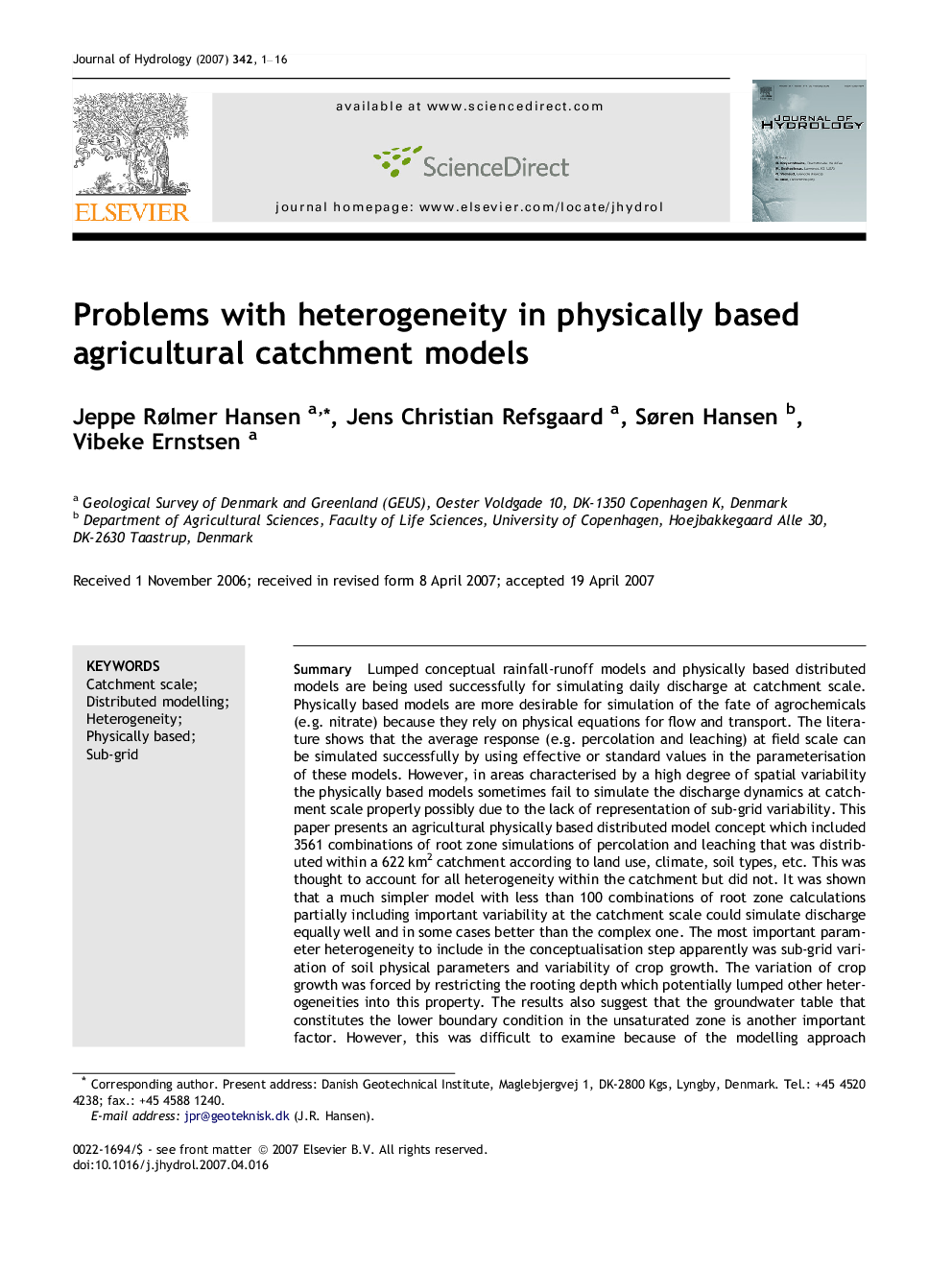| Article ID | Journal | Published Year | Pages | File Type |
|---|---|---|---|---|
| 4579855 | Journal of Hydrology | 2007 | 16 Pages |
SummaryLumped conceptual rainfall-runoff models and physically based distributed models are being used successfully for simulating daily discharge at catchment scale. Physically based models are more desirable for simulation of the fate of agrochemicals (e.g. nitrate) because they rely on physical equations for flow and transport. The literature shows that the average response (e.g. percolation and leaching) at field scale can be simulated successfully by using effective or standard values in the parameterisation of these models. However, in areas characterised by a high degree of spatial variability the physically based models sometimes fail to simulate the discharge dynamics at catchment scale properly possibly due to the lack of representation of sub-grid variability. This paper presents an agricultural physically based distributed model concept which included 3561 combinations of root zone simulations of percolation and leaching that was distributed within a 622 km2 catchment according to land use, climate, soil types, etc. This was thought to account for all heterogeneity within the catchment but did not. It was shown that a much simpler model with less than 100 combinations of root zone calculations partially including important variability at the catchment scale could simulate discharge equally well and in some cases better than the complex one. The most important parameter heterogeneity to include in the conceptualisation step apparently was sub-grid variation of soil physical parameters and variability of crop growth. The variation of crop growth was forced by restricting the rooting depth which potentially lumped other heterogeneities into this property. The results also suggest that the groundwater table that constitutes the lower boundary condition in the unsaturated zone is another important factor. However, this was difficult to examine because of the modelling approach that did not feature feedback from the saturated to the unsaturated zone. A list of the most important parameter heterogeneity to be included in the conceptualisation steps of future catchment model studies was suggested. It is postulated that such a model would not imply more calculations than the original model but improve the discharge predictions significantly.
